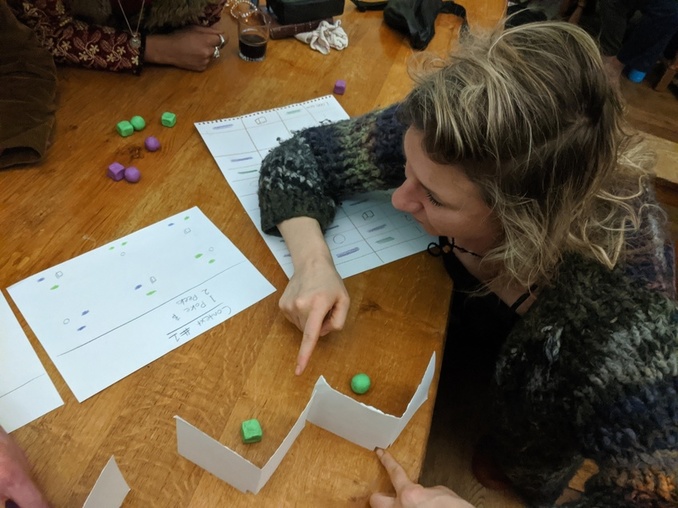I’ve found very few expositions of quantum contextuality that are accessible to a non-technical audience. So, I’ve been iterating on a game that exposes the key ideas. Behind the scenes, it uses GHZ states and an implicit assumption of locality to generate a paradox. No physics / math background is required to play. It’s based on a beautiful exposition by David Mermin.
After almost two years of showing it to friends, I’d like to post the details publicly. Check back here soon.
You can get a feel of it from this photo:

If you know of any good explanations of contextuality, please get in touch!
Related resources:
- Logical paradoxes in quantum computation
- Includes a good definition of “contextuality”
- Negativity, Contextuality, Magic and the Power of Quantum Computation
- Discusses the relationship between contextuality and the quantum speedup
- Contextuality supplies the magic for quantum computation
- Relates contextual states to magic states
- Computational power of correlations
- It’s shown that access to a 3Q GHZ state (which is “contextual”) lifts a classical parity computer (gate set = {XOR, NOT}) to a complexity class that classicaly requires an imbalanced gate (e.g. NAND). I find the boundary between P and BQP much harder to reason about than the one considered in this paper (between L and P).
- Contextuality as a resource for measurement-based quantum computation beyond qubits
- Contextuality and The Single-Qubit Stabilizer Formalism
- Discusses “generalized contextuality”
- Contextuality Provides Quantum Advantage in Postselected Metrology